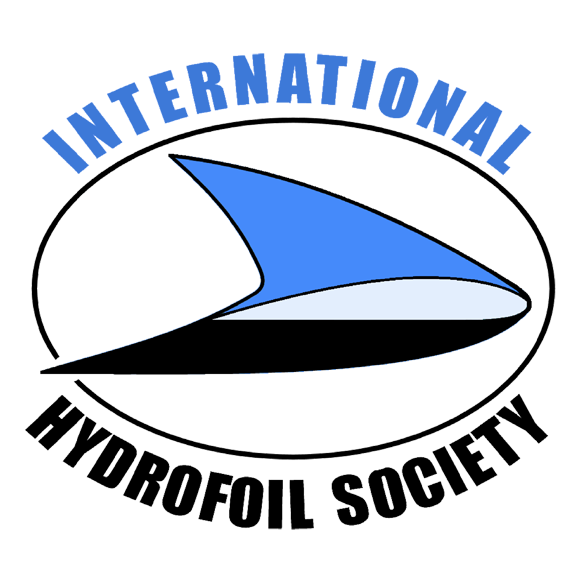2015 Awards
First Prize 2015
Subject: A Multiphase RANSE-Based Computational Tool for the Analysis of Supercavitating Hydrofoil
Author: Luca Bonfiglio
University of Genoa, Genoa, Italy / Visiting PhD student at Massachusetts Institute of Technology, Mechanical Engineering Department, Cambridge, Massachusetts
Faculty Adviser: Prof. Stefano Brizzolara
Description:
Hydrofoils have been traditionally used in marine systems for propulsion and stabilization purposes. During 20th Century plan- ning crafts started to be partially sustained by lift forces devel- oped by immersed hydrofoils with the aim to decrease the wetted area, and hence the resistance. It is clear that hydrofoil design be- comes a very important aspect for very high speed crafts. For this reason the flow have to be accurately solved to capture the com- plex hydrodynamic phenomena. A complete simulation frame- work consisting of an automatic grid generation module, a high fidelity CFD solver and a post-processing tool has been devel- oped with the final goal to be included in a shape optimization process, specifically designed for cavitating or super-cavitating hydrofoils. The simulation framework has been coded to deal with any foil geometry with the minimum requirement of input data. The major complexities of hydrofoil fluid dynamic such as cavitation, laminar-turbulent transition, flow separation and vortex shedding are solved by a non-linear fully viscous method based on URANS equations, which has been carefully tuned for the solution of the flow around 2D foil geometries. The frame- work has been designed to post-process results which are given in terms of lift and drag coefficient. The grid strategy and the CFD solver setting have been specifically studied with the goal to obtain a relatively fast computational method which could still maintain high level of accuracy. The simulation framework has been validated with two different geometries at different angles of attack, tested at Caltech high-speed cavitation tunnel over a wide range of cavitation indexes. Interesting results are critically discussed involving fully cavitating flow over the entire hydro- foil (super-cavitating) and the unsteady behavior of the hydrofoil working at partially cavitating conditions. The multiphase flow is numerically solved considering water and vapor as a single fluid of characteristics that depend on an indicator scalar function as in the volume of fluid approach. Results have been verified on suc- cessively refined grid to understand the influence of mesh resolu- tion on capturing the dynamic of the cavity. The main advantage of these methods is that there is no boundary condition on the cavity surface and the vapor flow is fully resolved allowing for a better solution of the pressure recovery at the cavity closure.
~~~~~~~~~~~~~~~~~~~~~~~~~~~~~~~~~~~~~~~~~~~~~~
Click here to download PDF version
Honorable Mention 2015
Subject: A Comparative Analysis of Low-Aspect-Ratio Conventional and Single-Slotted Circulation Control Foils Intended for Marine Hydrodynamic Applications
Authors: Sam Granger and Randall Neureuter
Webb Institute
Faculty Adviser: Prof. Richard A. Royce
Description:
Lifting surfaces are used in various marine applications that require high lift generation with minimal drag. This thesis investigates the application of circulation control (CC) on a submerged wing using the circulating water channel in Haeberle Laboratory at Webb Institute. The objective of this thesis is to design and construct a CC foil within established parameters from previous work and to determine the increase in lift and analyze three-dimensional effects on the CC foil compared with a conventional foil. Two model foils were developed. The first is a conventional NACA 65-015 foil, and the second is the same section with a modified CC trailing edge. The lift and drag forces developed by each foil were compared for testing with and without endplates. Moderate blowing from the CC slot at zero angle of attack exceeded the lift force generated by the conventional foil throughout the test matrix. As expected, endplate testing yielded an increase in lift, but further improvement could be made by using a larger endplate to further mitigate tip vortices.
~~~~~~~~~~~~~~~~~~~~~~~~~~~~~~~~~~~~~~~~~~~~~~
Click here to download PDF version
Honorable Mention 2015
Subject: Design, Construction, and Testing of a Hydrofoil Rowing Shell
Author: Lily Van Steenberg
United States Naval Academy
Faculty Adviser: Prof. Gregory White
Description:
This goal of this project was to develop a hydrofoil rowing craft. A set of hydrofoils was designed and built to attach to a conventional single-person crew shell. The foils were designed through a combination of numerical modeling and standard foil calculations. A spreadsheet was written to perform hydrofoil calculations and optimizations, accounting for a foil geometry, spray drag, junction drag, and surface effects. The foils were optimized for aspect ratio and planform area, and constructed out of carbon fiber using a hand layup with vacuum bagging technique. The foil performance matched the predictions of the spreadsheet over a range of speeds and angles of attack. When tests were conducted on the river, the shell foiled successfully with several different rowers of different heights and weights. By adjusting the angles of attack of the foils, the shell can be adjusted so that almost anyone can fly.
~~~~~~~~~~~~~~~~~~~~~~~~~~~~~~~~~~~~~~~~~~~~~~

